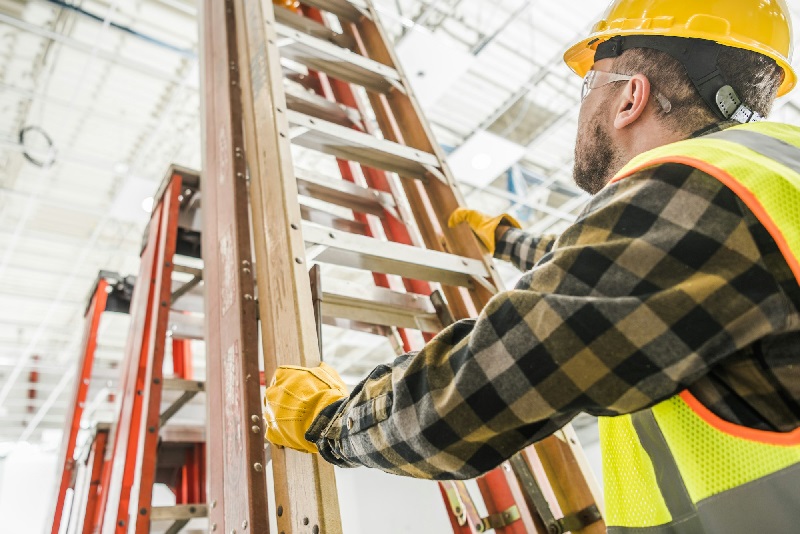Working at heights is one of the most hazardous activities in various industries, including construction, manufacturing, and maintenance.
The potential for falls and injuries is significant, making height safety equipment an essential aspect of workplace safety. However, simply having the equipment is not enough; ensuring that it is regularly maintained is equally, if not more, critical. In this blog post, we’ll explore why regular maintenance of protection from heights equipment is non-negotiable, the risks of neglecting it, and the best practices for maintaining this equipment.
The Importance of Height Safety Equipment
Height safety equipment includes a range of devices designed to protect workers from falls and injuries when working at elevated positions. This equipment typically includes harnesses, lanyards, anchor points, guardrails, and fall arrest systems. The primary function of these tools is to prevent falls or to minimize the impact if a fall occurs. Given the high stakes, the equipment must be in optimal condition at all times.
Legal and Regulatory Obligations
In many countries, including Australia, the United States, and the United Kingdom, there are stringent regulations governing the use of height safety equipment. Organizations such as OSHA (Occupational Safety and Health Administration) in the U.S. and Safe Work Australia have set clear guidelines for the maintenance and inspection of height safety equipment.
Failure to comply with these regulations can lead to severe penalties, including hefty fines and legal action. More importantly, non-compliance puts workers at risk, leading to potential injuries or fatalities. Regular maintenance ensures that the equipment meets the required safety standards and performs as intended in protecting workers.
The Risks of Neglecting Maintenance
Neglecting regular maintenance of height safety equipment can lead to catastrophic consequences. Here are some of the risks associated with poor maintenance:
- Equipment Failure: Over time, wear and tear can compromise the integrity of height safety equipment. Without regular inspections and maintenance, issues such as frayed harnesses, corroded anchor points, or malfunctioning fall arrest systems can go unnoticed. In an emergency, faulty equipment can fail, leading to severe injuries or fatalities.
- Increased Liability: Employers have a duty of care to ensure the safety of their workers. Neglecting maintenance of safety equipment can be seen as a breach of this duty, making the employer liable for any accidents that occur as a result. This can lead to costly lawsuits, increased insurance premiums, and damage to the company’s reputation.
- Decreased Lifespan of Equipment: Regular maintenance not only ensures safety but also extends the lifespan of the equipment. Neglecting maintenance can accelerate the deterioration of the equipment, leading to more frequent replacements and increased costs for the business.
- Loss of Productivity: If equipment fails due to lack of maintenance, it can cause work stoppages and delays. This not only affects productivity but also leads to financial losses, especially in industries where time is a critical factor.
- Increased Insurance Costs: Insurance companies often require proof of regular maintenance and inspections as part of their coverage requirements. Failing to maintain height safety equipment can result in higher insurance premiums or, in some cases, the refusal of coverage.
Best Practices for Maintaining Height Safety Equipment
To ensure the safety of workers and compliance with regulations, it is essential to establish a robust maintenance program for height safety equipment. Here are some best practices to consider:
- Regular Inspections: Regular inspections are crucial in identifying potential issues before they become serious problems. Inspections should be conducted by qualified personnel who are trained to recognize signs of wear and tear, damage, or malfunction. It is recommended to perform visual inspections before each use, with more thorough inspections conducted on a monthly or quarterly basis, depending on the frequency of use and the environment in which the equipment is used.
- Detailed Record Keeping: Keeping detailed records of all inspections, maintenance, and repairs is essential for tracking the condition of the equipment over time. These records should include information such as the date of inspection, the name of the inspector, the condition of the equipment, and any maintenance or repairs performed. This documentation is not only useful for internal tracking but also necessary for regulatory compliance.
- Follow Manufacturer Guidelines: Height safety equipment comes with manufacturer guidelines for maintenance and inspection. It is crucial to adhere to these guidelines to ensure the equipment remains in optimal condition. Manufacturers may also provide recommended intervals for maintenance and replacement of certain components, which should be strictly followed.
- Proper Storage: How you store height safety equipment can significantly impact its lifespan and performance. Equipment should be stored in a clean, dry, and cool environment, away from direct sunlight, chemicals, or sharp objects that could cause damage. Proper storage helps prevent unnecessary wear and tear and keeps the equipment in ready-to-use condition.
- Timely Repairs and Replacements: If any part of the height safety equipment is found to be damaged or defective during an inspection, it should be repaired or replaced immediately. Delaying repairs can compromise the safety of the equipment and put workers at risk. It is also essential to replace equipment that has reached the end of its usable life, as specified by the manufacturer.
- Training for Workers: Even the best-maintained equipment is ineffective if workers do not know how to use it correctly. Providing regular training for workers on the proper use, inspection, and maintenance of height safety equipment is essential. Training should also cover the importance of reporting any issues or defects they notice while using the equipment.
- Engage Professional Maintenance Services: For organizations with extensive height safety equipment, it may be beneficial to engage professional maintenance services. These services can provide specialized knowledge and expertise in maintaining and repairing height safety equipment, ensuring compliance with regulations and the highest safety standards.
The Role of Technology in Maintenance
Advancements in technology have made it easier to maintain height safety equipment. For example, some companies are now using RFID (Radio Frequency Identification) tags to track the maintenance history of equipment. These tags can be scanned to access detailed information about the equipment’s inspection and repair history, making it easier to ensure that maintenance schedules are followed.
Additionally, software solutions are available that can automate the scheduling of inspections, maintenance, and repairs, ensuring that nothing falls through the cracks. These tools can also generate reports that help demonstrate compliance with regulatory requirements.
Conclusion
Regular maintenance of height safety equipment is not just a regulatory requirement; it is a critical component of ensuring the safety and well-being of workers. The risks associated with neglecting maintenance are too great to ignore, from equipment failure and legal liability to financial losses and decreased productivity.
By implementing a comprehensive maintenance program that includes regular inspections, proper storage, timely repairs, and worker training, businesses can protect their workers and their bottom line. In an environment where safety is paramount, regular maintenance of height safety equipment is truly non-negotiable.










